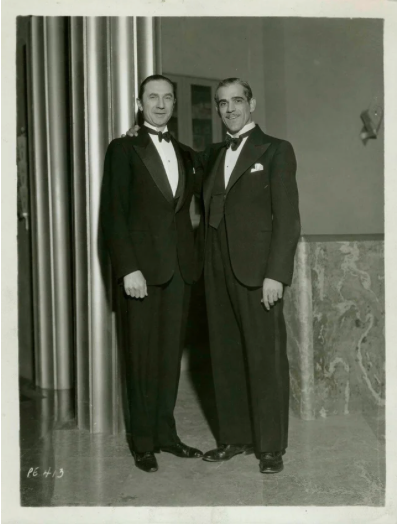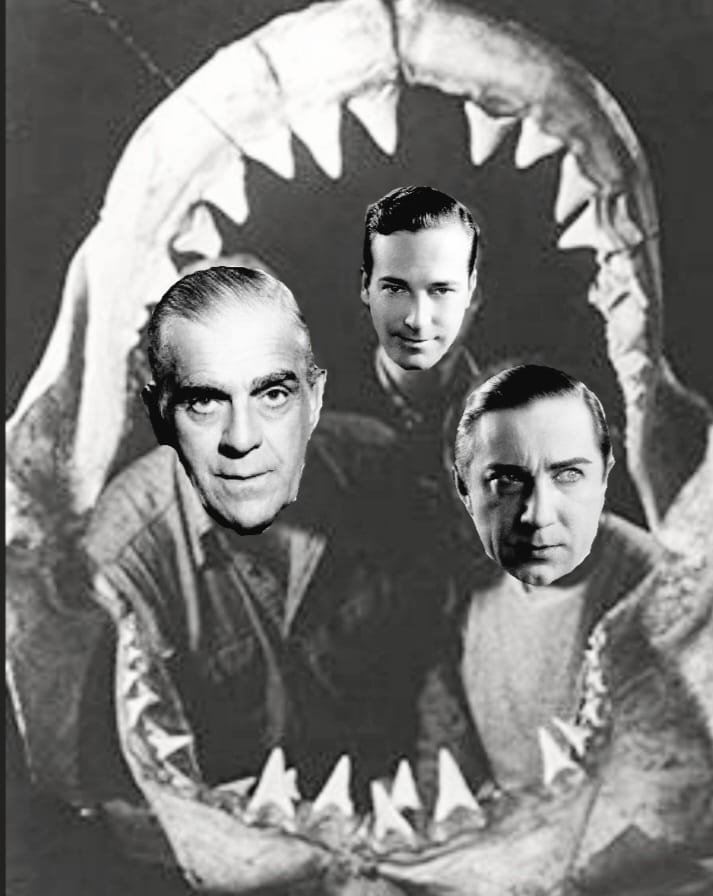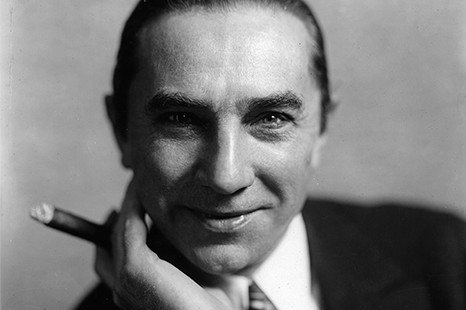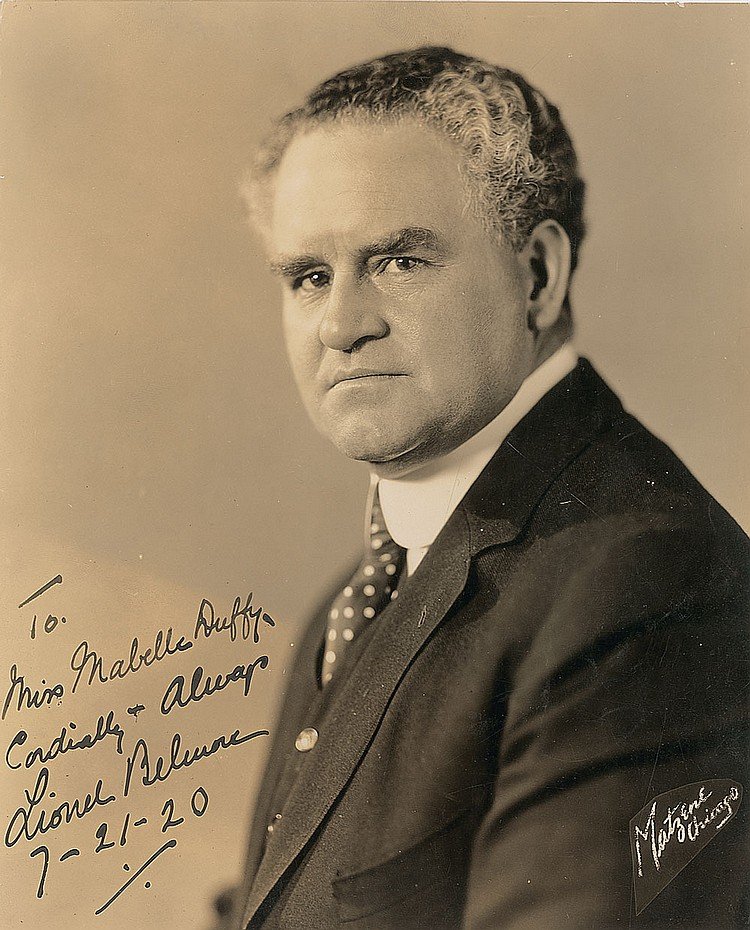What if Jaws had been made in 1935?
Often I have considered some of my all time favourite films and asked myself the question “What if?”. What if another director had made the movie? What if this actor had played the role instead? What if the film had been made in a different time period?
The other day, the question came to mind… what if Jaws had been made in 1935?
Whilst speculating over this scenario, I set myself a couple of rules. I decided that the film would have to be produced by the same production company, which means it would have been released by Universal during its horror heyday. With this established, it also meant that other factors had to come into play. For one, the film would have to be shot in black and white. Secondly the run time would be dramatically shorter than the 124 minutes of the 1975 version. Thirdly, the film would still have to be released in June like its 1975 counterpart. Finally the cast and crew involved would have to be those associated with Universal at the time, particularly with the horror genre.
And here was when I realised that the 1935 version of Jaws was going to be a Lugosi/Karloff feature…
Back in the 30s, horror movies were all the rage in Hollywood, particularly within Universal Studios. Much of this is due to the success of the movies Dracula and Frankenstein, both released in 1931, which starred Bela Lugosi and Boris Karloff respectively.
By 1935, the pair had starred in two films together. The Black Cat (1934) and The Raven (1935), with Karloff receiving top billing for each film. Both films were “inspired” by Edgar Allan Poe stories, though their plots share resemblance to these tales in title alone. It is in this backdrop where Jaws 1935 comes into play…
Bela Lugosi and Boris Karloff in the 1930's.
A Story About a Fish…
The plot of this movie would be similar to the 1975 version, however there would be a number of significant changes. For one, the film’s runtime would be only 70 mins, which is the run time of contemporary movies of that period. This means that 54 minutes of the original film’s runtime will be out the window. Therefore many scenes would have to be eliminated from the plot, including the whole sequence where Brody and Hooper have dinner, cut open the shark then patrol the waters of Amity island where they find Ben Gardner’s boat. Likewise a large chunk of the third act would have to be shortened, effectively trimming it down from occurring over two days to one. The film, as well, would have to keep in tone with the kind of horror movies at that time. This would include having a “damsel in distress”, hidden laboratories, gothic castles and out of place comedic moments (check out the police scene in The Black Cat to understand what I mean!)
The film will be set on Long Island in the fictional town of Amity, much like in Benchley’s novel. Martin Brody (David Manners), a lawyer and son of the mayor of Amity (Lionel Belmore), is engaged to be married with Ellen Brody, daughter of an enigmatic scientist called Dr. Hooper (Lugosi), who lives secluded in a large mansion atop a sea cliff on the outskirts of the town.
Meanwhile, one night, a fisherman is out on his boat fishing when there is a strange swell in the water. His boat is upturned and he falls into the water. Before he knows it, he is taken under by an unseen creature…
The next morning, Martin and Ellen are enjoying themselves at the beach. Despite Ellen’s attempts to coax Martin to go into the water with her, Martin refuses to go in. As Ellen is swimming however, Martin notices a large fin approaching her. Fearing that the shark will attack and eat her, Martin jumps into the water and helps pull her out of the water to safety.
Later that same day, the fisherman’s boat is found. Nobody knows what happened to it, though there is a large bite mark etched into the wood. As the investigators are debating over it with the Mayor, Brody and Ellen at the town hall, Quint (Karloff) arrives. He warns them that what attacked the boat was a large shark, and that it is a man-eater, who will not stop eating until every single person in the community has been consumed. The Mayor and the others dismiss his story as “fisherman talk”. Quint, nonetheless, promises them that he will hunt and kill the shark for them, showing off his prosthetic metal hand as proof of what such a creature can do, having been a victim of one during the 1916 Jersey Shore Attacks.
Newspaper headlines then appear to tell that there have been more victims of the shark. The Mayor continues to refuse to close the beaches, though more offers are made by volunteers to kill the shark. Amateur shark fisherman Ben Gardner decides to try and kill the shark himself. He goes out on a small boat one night and spots it in the water. He tries harpooning it, however the shark attacks and destroys his boat, consuming Ben Gardner.
Meanwhile Brody’s fiancé Ellen suggests that they visit her father, Dr. Hooper, the world’s authority on sea creatures, to see whether he knows anything that can help in killing the shark. Dr. Hooper lives isolated in a large mansion on the island. Inside his laboratory in a secret room are a host of sea creatures, ranging from giant octopuses to jellyfish and electric eels. Dr. Hooper is experimenting with a gigantism formula, hoping to be able to use it to breed fish that can help solve world hunger.
Brody mentions to Dr. Hooper that there is a gigantic shark that is currently attacking people. Dr. Hooper upon hearing this denies to know anything about a gigantic killer shark, though he shows admiration for such a creature. Martin is skeptical, though seeing that Dr. Hooper will do nothing and fearing that the shark will attack on the Fourth of July, Brody implores with his father to close the beaches, however his father refuses again, not wanting to lose revenue from tourism.
On the Fourth of July, the beaches remain open and people are having a wonderful time. As swimmers bathe in the waters however, the shark returns. The swimmers flee the water though one person is claimed by the shark.
A mob of angry townsfolk, led by the repentant Mayor, go out on a flotilla of boats to hunt the shark. They discover it and unleash all of their fury on the shark. The shark, however, appears impervious to their weapons and destroys each boat one by one, leaving the Mayor’s boat for last. The Mayor attempts to flee the scene, however his boat, too, is sunk and he is eaten by the shark.
Ellen tells Brody that they must go back to their father, believing that only he will know how to deal with the animal. Confronting him at his mansion, Dr. Hooper comes clean to Brody. He admits that the shark was an experiment, funded by the US Navy, to create a super weapon to destroy German U Boats during the war. The shark was tested by Lugosi in Jersey in 1916, however the shark went rogue and eats only people. Nothing else will satisfy it.
“It will continue to feed as long as there is food in the water.”
Hooper is conflicted over the idea of killing his most successful creation, his only scientific achievement. Upon discovering that his own daughter was almost killed by the animal, he reluctantly agrees to help destroy it, revealing the only weapon capable of destroying it, which only he can use.
The three of them meet up at the docks. Quint is the only fishermen willing to take them out and help hunt for the shark. Whilst they are searching for it, Quint discover’s Dr. Hooper’s involvement in creating the shark. Driven mad by this revelation, he knocks Brody unconscious with his metal arm, then forces Ellen at gunpoint into a shark cage. With Dr. Hooper tied up, watching, and Brody locked up unconscious below decks, Quint plans to use her as bait in order to lure the shark to his boat so he can kill, whilst in the process killing Ellen to get his own revenge on Dr. Hooper.
Meanwhile, Brody regains consciousness, manages to untie Dr. Hooper as Quint is distracted by the shark. Noticing too late, he turns and ends up in a fight with Dr. Hooper whilst Brody pulls Ellen out of the cage to safety.
During the fight, Dr. Hooper manages to trap Quint inside the shark cage. The shark begins to attack the cage and tries to eat Quint. Brody and Ellen try telling Dr. Hooper that they must flee now. Instead, Dr. Hooper clambers upon the top of the shark cage himself, knife in hand and tells them to escape on their boat.
‘Only I know how to destroy the shark! You go! You belong together! I must undo what is my greatest mistake…’
Priming a weapon that can kill the shark, Dr. Hooper cuts the rope, leaving him stranded atop the shark cage as it attacks it, trying to eat Quint. Brody and Ellen drive away on the boat. As they do, the weapon strapped to Dr. Hooper explodes, killing him, Quint and the shark in one massive explosion.
In the end, the romantic Romeo and Juliet music from The Black Cat and The Raven swells, Martin and Ellen are now aboard an ocean liner. Ellen is on a steamer chair whilst Martin is fishing off of the rail. He struggles to reel in a fish as onlookers and his wife watch. He pulls it in, revealing a tiny fish no bigger than his hand. He looks with embarrassment at his wife, who laughs at him, points at the fish and says; ’I think we’re gonna need a bigger boat!’
Cue the credits:- “It’s a Universal Picture!”
A Good Cast Is Worth Repeating!
So, who would be the stars of Jaws 1935?
Martin Brody - David Manners. One of the bigger changes in this version of Jaws is Brody. Still an “everyman”, his is no longer a police chief but a lawyer, which is reflective of the type of characters used in that period. I decided to have David Manners in the role simply because he is one of the best worst actors on Universal’s roster at that time. I truly have a soft spot for Manners. His acting is atrocious and is characters are always overshadowed by the likes of Karloff and Lugosi in the films he appeared with them in, yet there is something about his acting which makes him ideal for the role of Brody in this film.
Matt Hooper - Bela Lugosi. Perhaps the most drastically rewritten characters. In this version, Hooper is no longer in his mid-twenties but in his mid-fifties. He is called Dr. Hooper and fills the role of the mad scientist which Lugosi began to play. I did, however, want to retain some heroism in Hooper’s character, and I feel Lugosi himself is strongest when playing an anti-hero, as he does in The Black Cat. Therefore, though responsible for creating the shark, I decided that he would be the one who would destroy it in the end.
Quint - Boris Karloff. No one else could really play Quint in this version of Jaws. Karloff has that essence that is quite similar to Shaw. Though he would not be as “colourful” a character, Karloff would be able to pull off the doleful aspect that Shaw achieved, particularly during his Indianapolis speech. Indeed, Karloff is great at portraying mad and sympathetic characters (see The Old Dark House and The Raven respectively) and I wanted to capture this underlying madness in this version of Quint. Using the 1916 Shark Attacks instead of the Indianapolis not only gave him motivation both to hunt the shark and as animosity to Lugosi’s character - an essential element in any Lugosi/Karloff pairing - it is also contemporary to the time period that this film would have been released.
Ellen Brody - Gloria Stuart. This character was the most difficult to cast. When I came to research the actresses that appeared in Universal films during that period, I was surprised to find that not only were some Helen Chandler, for example, who played Mina in Dracula, was by 1935 an alcoholic and no longer working in movies. Frances Dade, who played Lucy in the same film, had retired from acting in 1932. Mae Clark was not working for Universal, but Fox, by 1935, and was involved in a car accident which left her with facial scarring in 1933, affecting her status as a leading lady as the decade wore on. Frances Drake (The Invisible Ray) was under contract with Paramount and would most likely have not been given the chance to appear in the film, as she would have been making Mad Love at the time this version of Jaws was being made. This leaves only one choice…
Gloria Stuart was under contract at Universal in the early thirties and made The Invisible Man with Claude Rains in 1933. She left Universal in 1935 and joined 20th Century Fox, yet Wikipedia does not give an indication as to when she left. Checking IMDB and the release date of her first movie for that company, which was December of that year in the movie Professional Soldier, it could be assumed that she would have been available at Universal around April-June for the filming of this version.
The Mayor - My initial idea for the Mayor was to be Lionel Atwill, though at this time he was not as big as a star in Universal until his appearance in Son of Frankenstein in 1939. Likewise, actor Edward Van Sloan was no longer a top billed actor in Universal’s books by 1935 and was relegated to bit parts, or even uncredited roles. My choice therefore went to Lionel Belmore, who played the Burgomeister in Frankenstein. According to his Wikipedia page, he only had one role, a bit part, in 1935, which was Mark of the Vampire. He would later go on to appear in Son of Frankenstein and The Ghost of Frankenstein, so maintain a close relationship with Universal.
Behind the Scenes Drama
Now, everyone knows that Jaws was a fraught production; the shark never worked, costs ballooned and the alleged feud between Shaw and Dreyfus. How would the 1935 production fared by comparison?
For one, the film would have been shot in a matter of weeks, not months. Films back in the 1930s, particularly in the horror genre, were a straightforward affair, but not without their complications.
No doubt most of the filming would have been done in a tank at the Universal backlot. A fake shark would have been made, looking perhaps more like a shark/whale hybrid than a great white. Indeed, most of the footage of the shark in the water would be stock footage of various shark species spliced together, ranging from grey reef sharks to tiger sharks.
Arial shot of the Frankenstein Village, Universal Studios backlot, circa early 1930s
Would filming of actors have been done with real sharks? We could speculate, with the lack of health and safety on film sets in those days, that there might have been an attempt to have had footage of a stuntman wrestling with and being “eaten” by a shark underwater, as has been seen in many a James Bond movie over the years. On the other hand, as sharks would not become a fixture of public imagination until the 1960s, with films such as Henri Bource’s “Savage Shadows”, Burt Reynolds’s “Shark!” and later “Blue Water White Death” in 1971 bringing them to the public eye, there is every possibility that Universal in 1935 might not have bothered to film any footage of actors interacting with real sharks, or even attempting to film in the open ocean, particularly with their tight budgets and shooting deadlines.
The main area of drama during would no doubt have been between Lugosi and Karloff, much as it was with Shaw and Dreyfus in the 1975 movie. It has been alleged over the years that the two did not see eye to eye. Lugosi was said to have despised Karloff for taking the limelight away from him after Frankenstein. With the release of Dracula, Lugosi was touted by Universal executives to being the natural successor to “the man of a thousand faces” Lon Chaney Sr. who had died in 1930 of lung cancer, exacerbated when a piece of artificial snow during the filming of Thunder (1929) got lodged in his throat. When Lugosi either refused to play the Monster in Frankenstein, wanting instead to play Henry Frankenstein (Colin Clive), or was replaced by James Whale and the producers after watching Lugosi’s make-up tests (accounts on the story vary), the part was given to Boris Karloff, who soon became Universal’s star monster, going on to play The Mummy the following year. Soon, a rivalry was born between the two actors, which would only worsen as Karloff’s star grew, and Lugosi’s diminished. Even by 1935, though receiving top billing, second only to Karloff, he was earning less than half his wages (and sometimes was earning worse than the other cast members!). At this stage, however, the pair did seem to have a more professional, amicable relationship than would foster between them later on in their careers.
Finally, would the movie have been a “summer blockbuster”? I doubt that this version of Jaws would have reached the same heights as its 1975 counterpart, or even have made as much money as either Dracula or Frankenstein, however there is little question that it would have made for a great Lugosi/Karloff pairing!
It has been truly fun creating this “what if” scenario for Jaws in 1935. I hope you have enjoyed reading it and I’d love to hear your suggestions for alternative cast/plot points for this 1935 version!
Article contributed by Adam Hickey exclusively for The Daily Jaws
If you would like to write for The Daily Jaws, please visit our ‘work with us’ page
For all the latest Jaws, shark and shark movie news, follow The Daily Jaws on Instagram, Twitter and Facebook.













